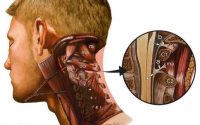Can Jaw Problems Affect Your Posture? A Closer Look at the Connection
A study from Poland explored the surprising connection between jaw disorders and body posture—specifically, how issues with the jaw joint might influence how we stand and distribute pressure through our feet.
What Are Temporomandibular Disorders (TMD)?
TMD is a group of conditions that affect the jaw joint, the muscles involved in chewing, and nearby areas. People with TMD often experience jaw pain, difficulty opening their mouths, or popping sounds in the joint. Recent research suggests that problems in the jaw might also impact posture, particularly through links with the neck and spine.
The Study
Researchers studied 81 volunteers, including 48 people with TMD and 33 without. They divided the TMD group into three types based on symptoms: muscle-related, joint-related, and a mix of both. Everyone underwent tests to measure foot pressure and how much of the foot touched the ground while standing in different jaw positions—relaxed, clenching teeth, and clenching with soft cotton rolls between their teeth. These tests were done with eyes open and closed.
What Did They Find?
- People with TMD had smaller foot contact areas than those without TMD when they clenched their teeth, meaning their feet made less contact with the ground.
- All participants, with or without TMD, showed changes in foot pressure depending on jaw position and whether their eyes were open or closed.
- The group with joint-related TMD showed more weight on the front part of the foot than the control group during certain tests.
- There were no major differences in how weight was distributed between the left and right feet between the TMD and non-TMD groups.
- Changes in posture linked to TMD were more noticeable when participants closed their eyes, suggesting vision may help compensate for balance shifts caused by jaw position.
Why It Matters
This research supports the idea that jaw disorders may influence body balance and posture. However, the effects are subtle and vary depending on the type of TMD and the conditions of the test. While the study didn’t find clear-cut answers, it highlights the importance of considering the body as a connected system.
What’s Next?
The authors suggest that larger and more detailed studies are needed. If future research confirms these findings, it could lead to better diagnosis and treatment plans—perhaps even including posture assessments as part of dental care for TMD.

